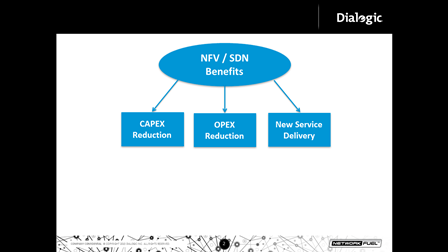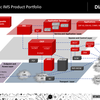
Network functions virtualization (NFV) will let service providers make the leap to software virtualization and general-purpose hardware. The ideas on which NFV are based are not new. But what is new with NFV is the move away from hardware to handle key segments of the network – for a truly software-powered telco network experience.
Here are three ways that NFV delivers cost savings for service providers:
1. No more proprietary hardware – NFV software runs on commercial off-the-shelf (COTS) hardware as opposed to high-ticket, proprietary networking hardware. Why does this matter? Let’s look at when this has happened in other industries, such as the desktop PC industry. Costs for that product set and solutions have come down drastically. A related piece to this reasoning is savings on the chassis itself. An NFV node can run on a single board computer, and that goes into a common chassis with multiple other network nodes that are also on single-board computers. This results in savings on chassis as one wouldn’t need a chassis for each network node. There would also clearly be sparing savings, since the COTS components are less expensive, and they would be more commonly available, obviating the need for as much on-site sparing. If hardware or DSP assist engines are not required, then you are running on COTS chassis. There is always a break-even point where COTS chassis becomes more expensive than hardware assist solutions, but as the power of the COTS single-board computer continues to increase via Moore’s law, this break-even point continues to happen at higher densities.
2. No more complex, expensive operations – Another attractive benefit of adopting NFV is that management of the software-based network nodes becomes much easier. It stands to reason that managing multiple vendors would be easier as well, especially if standards are in place for how the software interacts on the network. There is already talk of a software-defined network (SDN) controller that manages the SDN apps interacting with the network functions. The same could be conceived for NFV. This NFV controller would be able to configure the network and collect performance data on the entire network.
3. Service delivery is a snap – Operational expenditures (opex) also come into play when delivering and supporting new services. Delivering these services via NFV enables a lower opex model. Another important consideration is that service velocity is increasing and new services are being rolled out more quickly to meet subscriber demand. Operators need more agility with respect to the network elements required to be able to meet these needs. Software-based network elements meet the need for nimbleness because of ease of scalability and ease of adding newer functions, such as transcoding. And what about needs-based services? There might be a spike of traffic or service in which more service capability is needed instantly. With a software-based network element, adding more capacity can be enabled at a rapid pace. And if you’re not sure if you need a network element, or are not sure how much resources of that node you need, NFV is a great way to get started to try out new services and functionalities in an isolated way to avoid service interruptions.
The move toward software-powered telco networks have numerous implications for service providers. The effect telcos want to hear about first – cost savings – has a lot to do with why NFV is becoming an attractive option for key network segments.













